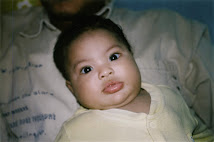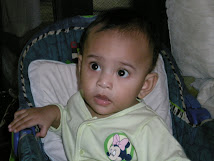Some experts are saying that the new school soda and drink guidelines from The Alliance for a Healthier Generation, William J. Clinton Foundation, American Heart Association, and beverage industry leaders to limit soda and other high calorie drinks in schools are a good first step in the battle against child obesity.
Many others think that much more needs to be done and that the guidelines may not go far enough though. For example, although the guidelines ban no sugar added juice, these drinks still have a lot of calories in them and diet soda, which also isn't included in the ban, will likely become the new favorite drink among high school students. Although they won't be getting a lot of calories from diet soda, high schoolers still won't be getting any nutrition from these drinks either, which they might if these drinks were banned altogether and kids were just encouraged to drink low fat milk.
If you don't think that these guidelines go far enough or don't want to wait until they go into effect in a few years, why not consider choosing your own healthy soda and drink guidelines for your family? Educating your kids about what they should be drinking is especially important because many kids can bypass guidelines about what is sold at schools by making unhealthy choices in other places, such as when they go to the store, are out to eat, or at a friends house, etc.
Healthy drink choices for your family, which you can also start at home to set a good example, might include:
1) Drink milk. How much milk should your kids be drinking? Keep in mind that the
- 1-3 years old get about 2 servings of milk (low fat milk after age 2 years)
- 4-8 years old get about 3 servings of low fat milk
- 9-18 years old get about 4 servings of low fat milk
2) Limit juice to 100% fruit juice, which is usually going to have less sugar and more vitamins and nutrients than other fruit drinks. Keep in mind that even 100% fruit juice has a lot of sugar in it, there is just no extra sugar added, and they can have almost 100 calories per 6 ounce serving. As far as juice, the AAP recommends that you be much more limiting. Among the recommendations of the from the AAP are that:
- when you give your child juice, it should be 100% pasteurized fruit juice and not fruit drinks
- infants under 6 months of age should not be given juice
- younger children aged 1 to 6 years should have only 4-6 ounces of juice a day
- older children should be limited to 8-12 ounces of juice a day
- instead of juice, children should be encouraged to eat whole fruits
3) Drink water.
4) Avoid soda, fruit drinks, sports drinks (unless your child is actively involved in a sporting activity at the time) and other sugary, high calorie drinks.
5) Teach your kids about serving sizes. For example, while a bottle of Gatorade might say it has 50 calories per serving, it is important to keep in mind that a single serving is supposed to be just 8 ounces. Since these and many other drinks, such as fountain drinks you can by at convenience stores, can often be bought in much larger 32 ounce or even 64 ounce servings, you can get a lot more calories than you think if you drink the whole thing.
6) Limit the amount of money that you provide for your kids and which they could use in school vending machines or after-school to buy soda, diet soda, and juice.
7) Remember that when you are choosing what to drink, you aren't simply looking at calories and sugar. Getting other vitamins and minerals from your drinks is important too, such as the calcium, vitamin D, and Vitamin A you get from milk and fortified orange juice. Or the Vitamin C you can get from 100% fruit juice.
8) Avoid caffeine.
9) Talk to your kids about what they are drinking at school. Many parents are surprised that their kids are buying soda or juice in between classes from vending machines or coffee on the way to school. Talking to your kids about how to make healthier choices and your expectations for what they should be drinking can help make sure they choose healthier things to drink, like low fat milk and water.
Our list of Common Drink Choices for Kids can help you compare some common drinks that kids like to drink and good choices. Obviously, with the extra sugar and calories, the chocolate milk would not be a good choice. And even though they don't have any fat, the Coca Cola Classic and Minute Maid Coolers have a lot of sugar in them. Comparing the drinks, you can see that the low fat milks, 100% fruit juice, and water would be the best choices.
10) Keep a drink diary to get a good idea of what your kids are actually drinking each day. Many kids get way too many calories from things they drink, including fruit drinks, tea, and soda. A drink diary can help you figure out how many calories your child is getting each day from milk, juice, etc., and why they are overweight.
Calories in Drinks
| Common Drink Choices for Kids | ||||
| Drink | Serving Size | Fat | Sugar | Calories |
| Whole Milk | 8oz | 8g | 11g | 150 |
| 2% Milk | 8oz | 5g | 12g | 120 |
| 1% Milk | 8oz | 2.5g | 12g | 100 |
| Skim Milk | 8oz | 0g | 12g | 80 |
| Hershey's Choc Milk | 8oz | 4.5g | 30g | 200 |
| Gatorade Thirst Quencher | 8oz | 0g | 14 | 50 |
| Coca Cola Classic | 8oz | 0g | 27g | 97 |
| Crystal Light Lemonade | 8oz | 0g | 0g | 5 |
| Tropicana Healthy Kids | 8oz | 0g | 22g | 110 |
| Diet Coke | 8oz | 0g | 0.1g | 1 |
| Minute Maid Coolers | 6.7oz | 0g | 27g | 100 |
| Minute Maid 100% Apple Juice | 6.7oz | 0g | 21g | 100 |
| Water | 8oz | 0g | 0g | 0 |
Info : http://pediatrics.about.com/od/nutrition/a/06_drink_gdlnes.htm
















































0 KOMEN:
Catat Ulasan
Kongsikan komen anda di sini...